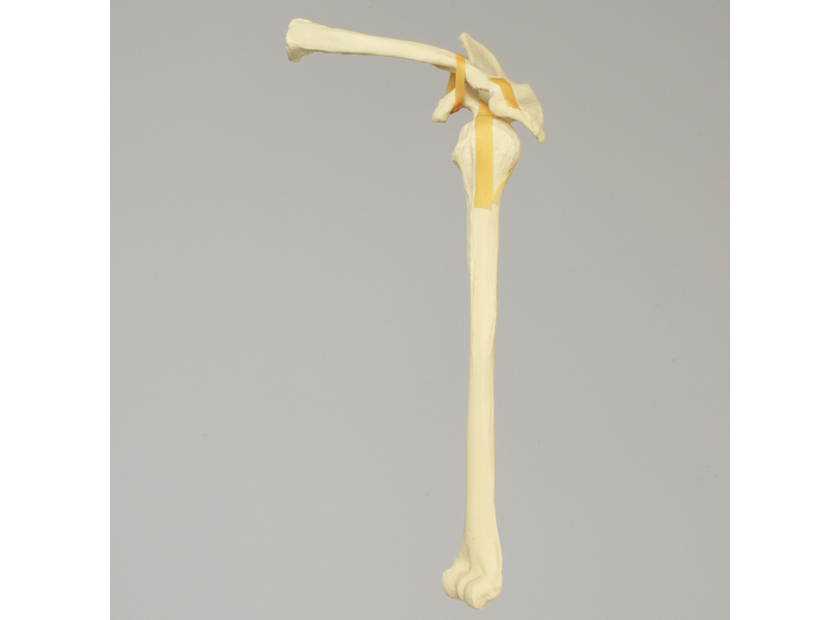Total Shoulder Arthroplasty (TSA): 4 Training Tactics Using a Bone Model
Total shoulder arthroplasty—or shoulder replacement surgery—is a relatively standard procedure for orthopaedic specialists and other surgeons. About 53,000 people in the US have such operations every year with the hopes of eliminating pain and staying active. Though it is a common procedure, skill and accuracy are crucial to ensuring the best outcomes for patients. Students will need extensive training on all methods and tactics.
Typically, the best training method for a total shoulder arthroplasty involves ramping up lessons as students become more familiar with the many treatment options. This will involve using basic medical education models early on as they learn to choose the correct approach. Once they're comfortable diagnosing and planning treatment, more complex surgical models will help round out their training.
Types of Shoulder Arthroplasties
One of the first things that students will have to understand is what types of shoulder arthroplasty to recommend based on their patient's symptoms. They'll have to decide on one of four approaches: reverse, partial, resurfacing, and traditional.
Reverse |
Partial |
Resurfacing |
Traditional |
|
The reverse shoulder arthroplasty is often indicated for individuals with significant damage to their rotator cuff and who can't undergo a traditional procedure. It involves reversing the ball and socket joint through the use of permanent implants. The goal is to completely change the joint's range of motion and make the non-functioning rotator cuff a nonissue. |
When the damage isn't severe enough to warrant a total shoulder replacement, a partial procedure might be an option. It's only possible with an intact socket joint, as the implant used replaces the humeral head. The surgery is also informally referred to as a "ream and run." |
Resurfacing is another option when the damage is not severe enough to require a total replacement. In this procedure, a cap may be placed on the existing humeral head to help improve joint function and reduce damage. The humeral head must be intact enough to allow it to support this implant. |
Traditional shoulder arthroplasty is typically a last resort, as it will likely impact all future activity for the patient. It's typically considered when the pain is at a debilitating level. The entire ball and socket joint is replaced with implants. The rotator cuff must be intact to allow the performance of this surgery. Otherwise, the reverse is the alternative. |
Before a student can even consider performing a total shoulder arthroplasty, they must be familiar with diagnostic strategies to ensure they select the right approach. Any replacement will cause some permanent impairment, so it's best to utilize the least invasive procedure possible.
Ramping Up Training for the Total Shoulder Arthroplasty
Jumping right into training a student on a traditional or reverse arthroplasty will likely skip many crucial steps in ensuring the accurate diagnosis and treatment plan for the patients' activity level, pain, and desired function. Instructors should use different kinds of medical and surgical training models as their students progress.
#1: Basic Demonstration Models
The first step to training is learning how to diagnose the injury and determine the correct course of treatment. For example, a basic model with damage but an intact humeral head and rotator cuff may be shown to the student to ask them to suggest the best surgical approach—resurfacing—to determine if they're ready to move on to the actual process. Meanwhile, another with a severely damaged rotator cuff may demonstrate when to perform a reverse total shoulder arthroplasty.
#2: Computer Simulations
Computer simulations allow students to learn the basics of total shoulder arthroplasty and its variations at their own pace. They get clear guidance on performance basics in a virtual environment where any mistake will not permanently damage the model. This step also allows many students to learn at the same time before they move on to physical models.
#3: Demonstrations on a Surgical Model
A highly detailed surgical demonstration model can allow the instructor to perform the procedure for students in a lecture environment. The complexity of the model is imperative, as students will likely need to learn several techniques simultaneously. Something that offers haptic feedback and all the necessary anatomical pieces will ensure a detailed lesson.
#4: Individual Training on a Surgical Model
Before moving on to cadaver training, the final stage is allowing students to perform procedures on their own assigned models. Ideally, parts on these models should be individually replaceable, so errors aren't permanent. Haptic feedback is another necessity, so they can tell when they're using the proper techniques.
Detailed total shoulder arthroplasty models are invaluable in orthopedic training. They can help students learn about the various procedures, determine accurate treatment courses and prepare them for moving on to more complex cadavers. By using a tiered approach, instructors ensure a highly detailed education while controlling costs.
Sawbones provides a comprehensive catalog of medical models suitable for training on total shoulder arthroplasties. Visit our contact us page to learn more, or call 206-463-5551 to speak with us today.

If you're seeking something you can't find on our website, our sales team is happy to help. We can either direct you to the right model or provide a free quote on the right custom project to meet your needs. Discover options with our clear bone models, laminated blocks, custom displays, or other machining projects.








